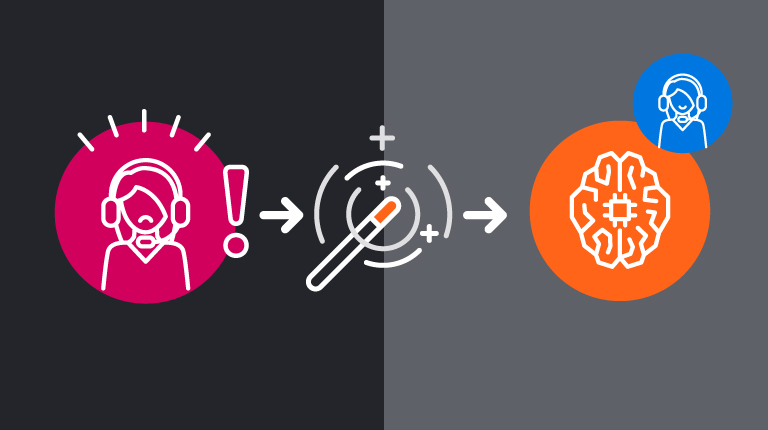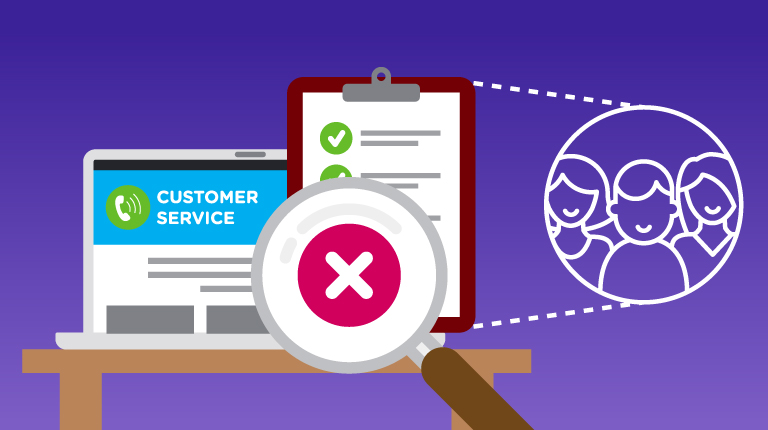Today, automation in the contact center is a necessity. Customers are busy and self-service provides a fast and efficient way for them to get things done. Consumers also recognize the benefits of using automated systems. In our recent survey, customers noted that when using an automated system, they see benefits such as:
- The convenience to get tasks done when they want to take care of them
- Speed of getting things done
- Not having to speak/type to a live person
The same survey also found that 64% of consumers would use a channel automated by AI to contact a business if they could get things done easier and more efficiently.
What do customers consider the biggest deterrents of automated systems?
Customers’ biggest pet peeve with automated systems is getting stuck in a never-ending loop and having to hang up (53%). This was followed by not being understood by the system (18%) and having to speak and type in a certain way (12%). The latter two contribute to the former in that most of the time people get into a never ending loop because they have to conform to the technology by using certain words or phrases to move forward and if they don’t, the system does not understand them.
There are many brands today that offer “conversational” automated systems. But, what do customers expect from this type of experience? We asked 1,100 U.S. consumers, ages 18+ about what characteristics are required for an automated system to be “conversational. Here’s what we found:
What consumers want in a conversational self-service system
To be understood (in multiple ways)
Consumers don’t want to have to speak or type in a certain way. They want to, well, have a conversation. Therefore, being able to use their own words and phrases was the top characteristic (46%) when it comes to a system that is touted as “conversational.”
It’s not surprising then that the next top characteristic for a conversational system is “a natural interaction, like talking to a human (37%). Being understood also means how someone is speaking. Therefore consumers also noted that a conversational systems should also understand them when they speak with a natural accent (22%)
Interact with a system that is user friendly and not robotic
Consumers shouldn’t need an instruction manual when trying to take care of tasks via self-service. Therefore they expect conversational systems to be user friendly and intuitive (44%). Consumers also don’t want to feel like they are talking to a robot, and prefer to interact with automation that sounds like a person (23%).
Have elements of a real conversation
When people have to repeat themselves–and sometimes multiple times–they may wonder if they are really being heard. With many of today’s automated systems people find that they have to repeat themselves over and over and sometimes to no sucess. That’s why 43% of consumers request a system where this isn’t required.
The same thing goes for waiting for a response. When you ask someone a question and there is a delay in response time, you begin to wonder if they are paying attention to you or if this is a one-sided conversation. Consumers want to make sure they are being heard and expect no long delays between answers (30%) when it comes to a conversational system.
Many times when customers contact customer service they have to choose a specific task to take care of via self-service. For example, press 1 or say billing. But what if the person has more than one task to achieve in that interaction. That’s why 18% of consumers feel that it’s important for conversational systems to be able to handle multi-topic conversations.
Takeaway: When using automated systems, consumers want natural conversation and it’s important that they feel understood–whether that be the words they use or how they speak. Conversational AI applications like virtual agents can provide these types of interactions. However, conversational design expertise is vital to ensure these natural types of experiences mimic talking to a human and include necessary rules of conversation.
When evaluating a Conversational AI application, make sure that your vendor not only offers AI expertise, but also designers with dialogue expertise specific to AI in CX including call flows, grammar and brand persona development, usability, caller experience optimization, and speech integration. This will ensure the natural and conversational systems that consumers want.




